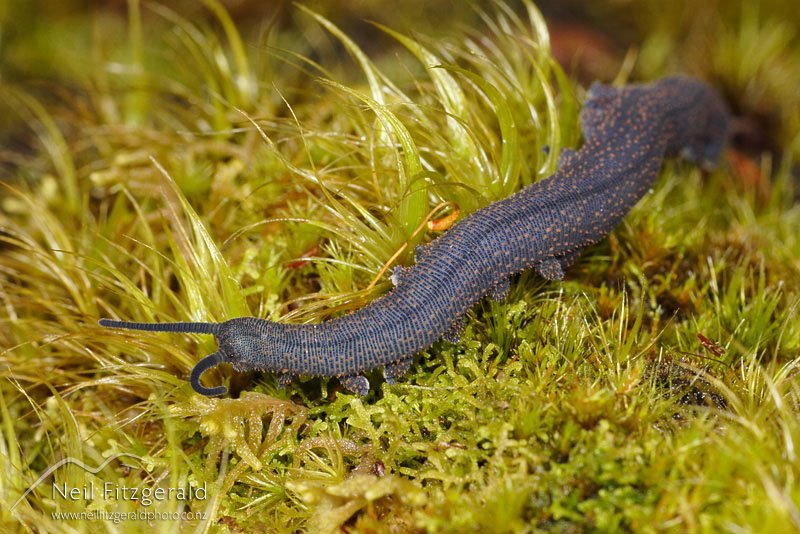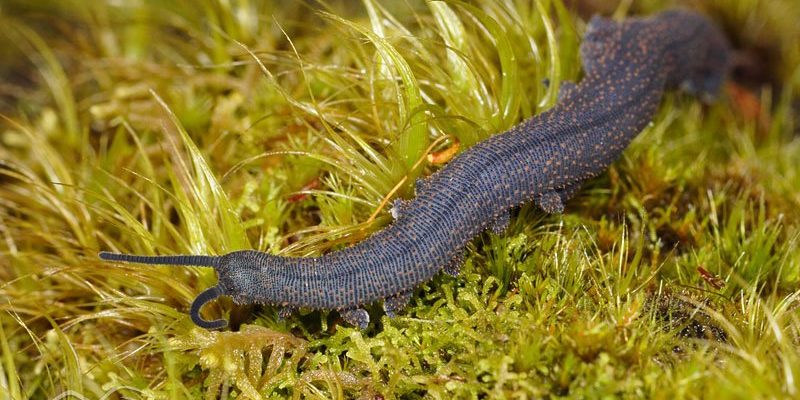
Velvet worms belong to the phylum Onychophora, which means “claw-bearing” in Greek. These soft-bodied, segmented animals can be found in a variety of environments, from damp rainforests to dry deserts. With around 200 species scattered across the globe, they showcase a surprising range of colors, sizes, and behaviors. It’s like a hidden world of tiny monsters, each with its unique story to tell!
What Are Velvet Worms?
Let’s get into the nitty-gritty of what makes velvet worms so special. These creatures are known for their large, soft bodies covered in a velvety skin, which is where they get their name. They might remind you of something out of a sci-fi movie with their numerous legs and antennae, but they’re very much real and not from another planet!
Velvet worms are considered “living fossils.” They’ve been around for over 500 million years, which means they’ve witnessed a lot of changes on Earth. They have a unique way of moving, using their many legs in a sort of dance as they crawl through their environment. If you’re curious, think of a tiny, squishy caterpillar on a mission.
They typically measure between 2 to 15 centimeters in length. Most species prefer humid environments where they can thrive. Their diet mainly consists of small insects, and they have a fascinating method of hunting: they can shoot a slime that immobilizes their prey, making it easy for them to feast. How cool is that?
The Range of Velvet Worm Species
Now, let’s dive into the different species of velvet worms. These critters can be found across various continents, each adapting to their unique environments. While they might share some common features, each species comes with its quirks and traits. It’s like a family reunion where everyone looks similar but has their own story.
– Peripatus and Peripatopsis are two of the most well-known genera. You’ll find them in places like New Zealand, Australia, and even in parts of Africa and the Americas.
– Eoperipatus species are mostly found in Central America. Their vibrant colors and patterns are a sight to behold, showcasing nature’s artwork.
Each of these species is adapted to its local environment. For instance, some thrive in moist rainforests, while others prefer the more arid climates of desert regions.
Distinct Features of Velvet Worms
So, what sets these little guys apart from other creatures, aside from their remarkable variety? One standout feature is their slime production. Velvet worms can spray a sticky substance to trap prey, giving them a unique way to hunt that’s quite unlike most other animals.
Also, their body structure is fascinating. They have a segmented body, much like an earthworm, but with legs on each segment. This allows them to move quickly and efficiently. The number of legs can vary among species, making some look quite unique.
Their mating rituals are also intriguing. Velvet worms engage in a courtship dance, using their antennae to touch and smell potential mates. It’s an elaborate affair, showcasing their need for connection before they can reproduce.
Habitat and Distribution
Understanding where velvet worms live is crucial to appreciating their diversity. They’re mainly found in tropical and subtropical regions, but there are some notable exceptions. These creatures favor moist environments, which makes rainforests a perfect home.
In countries like Madagascar and Australia, you can find a variety of species adapted to their local climates. Interestingly, some velvet worms can even be found in temperate zones. This highlights their incredible adaptability.
While they’re primarily terrestrial, a few species have adapted to different habitats, showing just how diverse and versatile they are. They thrive in leaf litter, under rocks, and even in decaying logs. It’s like they have a knack for finding cozy spots just right for their lifestyle.
Conservation Status of Velvet Worms
While velvet worms might not be the first animals that come to mind when thinking about conservation, they face threats just like many other species. Habitat loss due to deforestation, agricultural expansion, and climate change puts their populations at risk.
Some species are more vulnerable than others, especially those with limited ranges. For instance, velvet worms in isolated regions may struggle to adapt to changes in their environment. It’s crucial to increase awareness about their plight.
Conservation efforts are still developing, but researchers are working to understand their ecosystems better. By protecting their habitats, we can ensure that these remarkable creatures don’t disappear. After all, every little bit helps, right?
Why Velvet Worms Matter
You might be wondering, why should we care about velvet worms? They play a crucial role in their ecosystems by helping control insect populations. These little hunters act like nature’s pest control, keeping the balance intact.
Moreover, studying velvet worms can offer insights into evolution and biology. Their ancient lineage helps scientists understand how life has changed over millions of years. Plus, their unique traits might inspire new technologies—nature often holds the secrets to innovative solutions!
Ultimately, every species on our planet contributes to the web of life. When one thread is frayed, it affects the entire fabric. Protecting velvet worms means protecting the intricate ecosystems they represent.
Final Thoughts on Velvet Worm Diversity
As we wrap up our exploration of velvet worms, it’s clear they’re more than just odd-looking creatures. Their diversity and adaptability are a testament to the wonders of evolution. From their unique hunting methods to their varying habitats, velvet worms are a fascinating part of our world that deserves recognition.
Next time you hear someone mention weird animals, you can confidently tell them about velvet worms. Who knows? You might inspire someone else to appreciate these hidden gems of the animal kingdom. Let’s keep the conversation going and continue to explore the incredible biodiversity of our planet!

